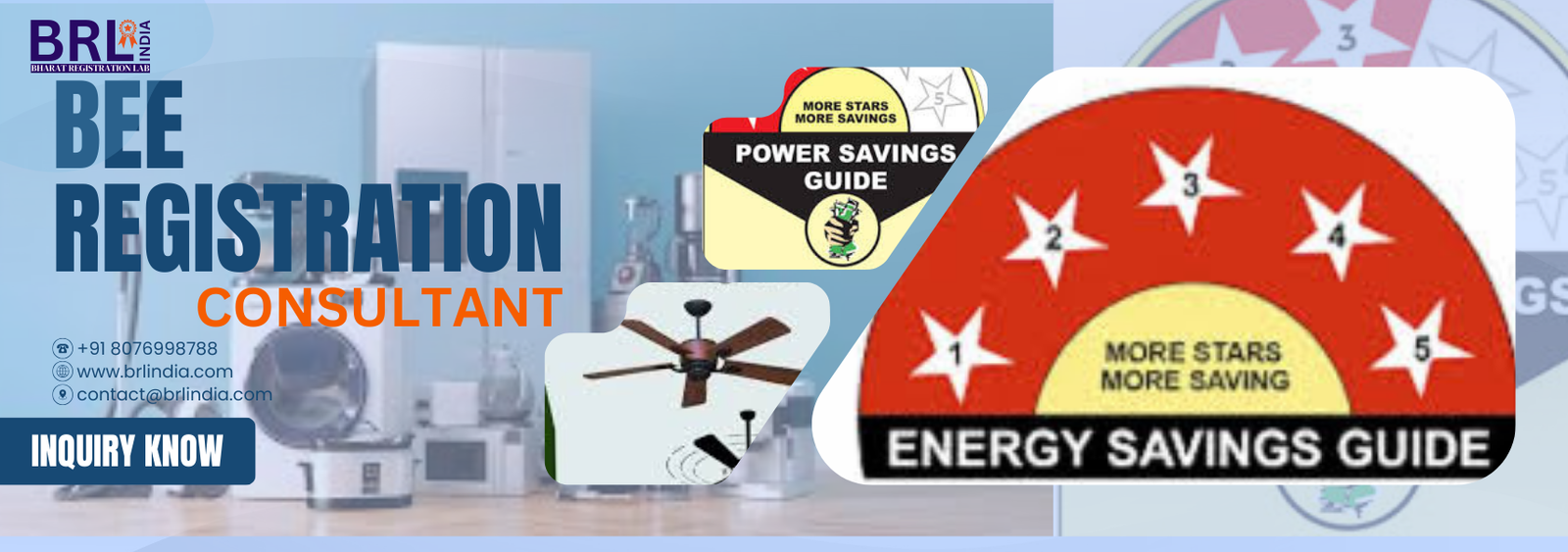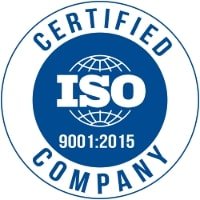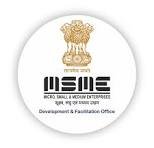
Bureau of Energy Efficiency Registration | BEE Certification
What is BEE registration?
BEE registering with the Bureau of Energy Efficiency (BEE), companies that make, ship, or sell electrical goods can get grants and other benefits. This organization, which is part of India's Ministry of Power, helps make sure that appliances use energy effectively. Companies must test their goods according to BEE's rules and provide the required paperwork in order to become registered with BEE. BEE gives appliances a star grade that tells people how much energy they can save if they meet the standards. This bee registration process helps people pick goods that use less energy. Following BEE's testing methods and applying for a star certification based on the test results is what a manufacturer must do to get their new model certified. A BEE certificate expert can also help them through the process.
Who needs a BEE Certificate
Anyone in India who wants to import products or trade domestically with items that need BEE certification must go through the BEE registration process. If you're importing goods or selling them within India, and those products fall under BEE certification requirements, you'll need to get registered. However, there's a limit: each importer or trader can only register one product from a single brand per login. This ensures that all products undergo the necessary testing and meet the energy efficiency standards set by BEE.
Types of BEE registration
For Mandatory Appliances:
-
Frost Free Refrigerator
-
Stationary Storage Type Electric Water Heater
-
Colour Television
-
Room Air Conditioner (Variable Speed)
-
TFL
-
LED LAMPS
-
Room Air Conditioner (Fixed Speed)
-
RAC (Cassette, Floor Standing Tower, Ceiling, Corner AC)
-
Distribution Transformer
-
Direct Cool Refrigerator
-
Ceiling Fan
For Voluntary Appliances:
-
Computer
-
Domestic Gas Stove
-
General Purpose Industrial Motor
-
Submersible Pump Set
-
Washing Machine (Semi/Top Load/Front Load)
-
Ballast
-
Solid State Inverter
-
Office Automation Products
-
Diesel Engine Driven Monoset Pumps for Agricultural Purposes
-
Diesel Generator Set
-
Chillers
-
Microwave Oven
-
Solar Water Heater
-
Deep Freezers
-
Light Commercial AC Fixed Speed
-
Ultra-High Definition (UHD) Televisions
-
Air Compressors
-
Tyres/Tyres
-
High Energy Li-Battery
-
Table Fan / Wall Mounted Fan
-
Pedestal Fan
-
Induction Hob
-
Side by Side Refrigerator
Documents required for BEE registration
Documents Required by the Testing Lab:
- Samples along with a comprehensive user manual.
- A copy of the BIS License that displays the validity date for all models applied.
- A Factory License copy indicating the product scope and manufacturing unit address in both English and the original language.
Documents Required by BEE for Brand/Company Registration:
- A cover letter stating the purpose of registration.
- Proof of online security deposit payment in the form of a receipt.
- Submission of the online Brand registration application.
- Copy of Brand/Trade Mark registration.
- If the manufacturing unit is not the trademark/brand owner, a letter of authorisation from the trademark owner is necessary.
- For Indian OEMs, provide a copy of the MSME certificate.
- An authorized signatory letter.
- Another copy of the BIS License demonstrates the validity date for all applied models.
- Copies of ISO 9001 certificates for all manufacturing facilities, if multiple, issued in the name and address mentioned in the company registration form of the manufacturer.
Documents Required by BEE for Model Registration:
- A cover letter addressing the intent of model registration.
- Evidence of online model registration payment through a receipt.
- Submission of the online application form for model registration.
- The original test report was conducted on the model.
- A specimen of the BEE label template for the model.
Step by Step process for BEE certification
Step 1: Submit Samples and Documents to an Accredited Laboratory: Begin your journey by submitting your samples and documents to a laboratory accredited by the National Accreditation Board for Testing and Calibration Laboratories (NABL). Obtain the crucial test report.
Step 2: Register Your Brand Online: Collect all necessary paperwork and proceed to register your brand on the BEE portal. Make the required online payment for the security deposit fee to kickstart your registration process.
Step 3: Submit Printed Application to BEE: Print and sign your application, ensuring all relevant attachments are in order. Submit these documents to the Bureau of Energy Efficiency through an Authorized Signatory.
Step 4: Provide Additional Information if Needed: Be prepared to offer any requested clarifications or supplementary details to BEE during the registration process.
Step 5: Activate Model Registration Link: Upon approval of your brand/company registration, BEE will activate the link for model registration, marking progress in your journey.
Step 6: Complete Online Application Form: Navigate through the online application form meticulously, ensuring all fields are accurately filled.
Step 7: Upload Requisite Information and Documents: Assemble all necessary information and documents, then upload them onto the BEE portal for further processing.
Step 8: Make Model Registration Fee Payment: Complete the final steps by making the online payment for the model registration fee to BEE.
Step 9: Submit Printed Application Copy: Submit a printed and signed copy of your application, including all necessary attachments and a sample of the BEE Label if required.
Step 10: Provide Additional Details if Requested: Be responsive to any further clarifications or additional details requested by BEE.
Step 11: Await Approval and Label Affixing: Upon successful verification of all documents, BEE will grant permission for affixing the label on your product, marking the completion of the registration process.
Cost of procuring a BEE certificate
Company Registration Fees:
- For large-scale companies: ₹1,00,000
- For small-scale companies: ₹25,000
Model Registration Fee: ₹2,000 per model
Label Fees: The charges for BEE labels vary depending on the type of appliance. These fees are subject to change based on the specifications and intended use of the appliance.
Benefits of having a BEE Certificate
Standards Followed: To be energy efficient, you have to follow certain rules very carefully. Getting certified by BEE makes sure that these standards are kept up to date as required by law.
Legal Compliance: This accreditation makes sure that businesses and makers follow the law without any doubt. It's a real guarantee that the rules set out in the Energy Act of 2001 will be followed.
Improved image: BEE certification improves the image of manufacturers and industries by showing that they are serious about following the rules and building trust among all parties involved.
Better Efficiency: Manufacturers and businesses that obtain BEE certification must meet certain levels of efficiency. By doing so, they help make the Energy Act of 2001's concepts a reality, which encourages environmentally friendly energy use.
Penalty
Penalties for not following the BEE star label requirement stop companies from lying about their goods and make sure customers get correct information about how energy-efficient they are. Here are the exact punishments that can be given for not following the rules for BEE star labelling:
- First Offense: You could get a fine of up to 1 lakh rupees.
- If you do it again, you could be fined up to 2 lakh rupees.
- If this happens again, you could be fined up to 5 lakh rupees.
- sending the manufacturer a "show-cause" letter.
- The company's license to sell goods in India could be taken away or suspended.
- Publishing the name of the maker on the BEE's website.
Renewal of registration
The process of renewing a BEE certificate is vital for manufacturers and permittees to ensure continuous compliance. Below is the procedure for renewing the agreement:
- Notification: Manufacturers or permittees will receive an online renewal notice from the Bureau or its designated agency via the S&L web portal before the scheduled expiry date.
- Data Update: Before applying for renewal, permittees must ensure that all production data, including labelling fees for registered models, is current. This update should occur no later than one month before the renewal deadline.
- Application Submission: Once the data is updated, permittees can submit their renewal application. If the application meets the requirements outlined in sub-clause 'b,' BEE will approve it within one month.
- Consequences of Delay: Failure to renew the agreement on time will result in the portal being blocked until the renewal is processed, emphasizing the importance of timely renewal for uninterrupted operations.
Withdrawal of BEE Certificate
To begin the withdrawal process, the permittee must follow the steps listed below:
- Notification of Intent: The permittee communicates its intention to withdraw the certificate to the Bureau through written correspondence.
- Model Identification: Through the S&L web portal, the permittee identifies the specific models intended for withdrawal.
- Financial Review: The Bureau conducts a thorough review of the permittee's financial obligations, ensuring no outstanding dues remain.
- Approval/Rejection: Following the review, the Bureau proceeds to approve or reject the withdrawal request. The decision is then communicated to the permittee via the S&L web portal.
Conclusion
Obtaining and maintaining a BEE certificate is crucial for businesses in India to demonstrate compliance with energy efficiency standards. The registration process, though detailed, ensures that appliances meet prescribed energy-saving criteria, benefiting both consumers and the environment. Renewal procedures are essential to sustain compliance, highlighting the significance of timely action. Conversely, the withdrawal process provides an avenue for permittees to discontinue certification when necessary, with clear steps outlined for a seamless transition. Overall, adherence to BEE regulations not only fosters legal compliance but also enhances industry reputation and promotes sustainable energy practices.
FAQs
Q1. What does BEE mean? Also, what does it mean to be energy efficient?
The Indian Ministry of Power runs the Bureau of Energy Efficiency, which is what BEE stands for. It encourages saving energy and using it more efficiently in many areas. When you do the same things with less energy, you're being more energy efficient. This cuts down on waste and saves resources.
Q2. What does BEE do?
BEE's main job is to come up with policies and plans to encourage different areas to use energy more efficiently and save energy. It runs a number of programs and projects to make businesses, houses, appliances, and transportation use less energy.
Q3. What does BEE want to do?
BEE's job is to support saving and using energy efficiently as an important part of long-term growth. Its goals are to lower the economy's energy consumption, protect the environment, and keep energy prices low and secure.
Q4. Why is the Bureau of Energy Efficiency important? What does it do?
BEE is in charge of making rules for saving energy, labelling programs, running campaigns to raise knowledge, putting energy saving rules into action, giving technical help and building people's skills.
Q5. What are the BEE rules?
When you measure and improve the energy efficiency of different goods and equipment, the Bureau of Energy Efficiency sets the BEE standards. The goal of these guidelines is to lower a country's energy use, greenhouse gas emissions, and overall damage to the environment.
Q6. What does the Energy Conservation Act 2001 try to do?
The Energy Conservation Act 2001 is a law in India that makes it easier to save energy and use it more efficiently. It gives BEE the power to enforce standards for energy efficiency, do energy audits, and put in place steps to save energy in all areas.
Q7. Why should you try to save energy?
There are many important reasons to save energy. It cuts down on greenhouse gas emissions, fights climate change, protects natural resources, makes energy more secure, and lowers energy costs for businesses and individuals. Measures to save energy also help the economy grow and promote long-term development.
Q8. What kinds of lamps use less electricity?
LED (Light-Emitting Diode) and CFL (Compact Fluorescent Lamp) lights are examples of lamps that use less energy. These lamps use less electricity than regular incandescent bulbs but give off the same amount of light or more. LEDs are very energy-efficient and last a long time, so people who care about the environment often choose them.
PRODUCTS COVERED UNDER MANDATORY BEE LABELING
| Sl. No. | Product Name | Schedule |
|---|---|---|
| 1 | Frost Free (No-Frost) Refrigerator | Schedule 1 - Frost Free (No-Frost) Refrigerator |
| 2 | Tubular Fluorescent Lamps | Schedule 2 - Tubular Fluorescent Lamps |
| 3 | Room Air Conditioners | Schedule 3 - Room Air Conditioners |
| 4 | RAC (Cassette, Floor Standing Tower, Ceiling, Corner AC) | Schedule 3(A) - RAC (Cassette, Floor Standing Tower, Ceiling, Corner AC) |
| 5 | Distribution Transformer | Schedule 4 - Distribution Transformer |
| 6 | Direct Cool Refrigerator | Schedule 5 - Direct Cool Refrigerator |
| 7 | Electric Geysers | Schedule 10 - Electric Geysers |
| 8 | Color TV | Schedule 11 - Color TV |
| 9 | Variable Capacity AIR Conditioners | Schedule 19 Variable Capacity AIR Conditioners |
| 10 | LED Lamps | Schedule 20 LED Lamps |
PRODUCTS COVERED UNDER VOLUNTARY BEE LABELING
| Sl. No. | Product Name | Schedule |
|---|---|---|
| 1 | INDUCTION MOTORS | Schedule 6 - Induction Motor |
| 2 | AGRICULTURAL PUMP SETS | Schedule 7 - Pump Set |
| 3 | CEILING FANS | Schedule 8 - Ceiling Fans |
| 4 | LPG STOVES | Schedule 9 - Domestic Liquefied Petroleum Gas (LPG) Stoves |
| 5 | WASHING MACHINES | Schedule 12 - Washing Machine |
| 6 | DIESEL ENGINE DRIVEN MONO-SET PUMPS FOR AGRICULTURAL PURPOSES | Schedule 13 - Diesel Engine Driven MonosetPumps for Agricultural Purposes |
| 7 | LAPTOPS/NOTEBOOKS | Schedule 14 - Laptop Notebook Computers |
| 8 | BALLAST (ELECTRONIC/MAGNETIC) | Schedule 15 - ballast |
| 9 | OFFICE EQUIPMENTS'S | Schedule 16 - Office Equipments |
| 10 | SOLID-STATE INVERTERS | Schedule 17 - Solid State Inverters |
| 11 | DIESEL GENERATOR | Schedule 18 - Diesel Generator |
| 12 | CHILLERS | Schedule 21 - Chillers |
| 13 | MICROWAVE OVENS | Schedule 22 - Microwave Ovens |
| 14 | SOLAR WATER HEATERS | schedule 23 - Solar Water Heaters |
| 15 | LIGHT COMMERCIAL AIR CONDITIONERS | Schedule 24 - Light Commercial Air conditioners |
| 16 | DEEP FREEZERS | Schedule 25 - Deep Freezers |
| 17 | UHD TELEVISIONS | Schedule 26 - Ultra-High Definition Televisions |
| 18 | AIR COMPRESSOR | Schedule 27 - Air Compressors |
| 19 | HIGH ENERGY Li-BATTERY | schedule 29 - High Energy Li-Battery |
| 20 | TYRES | schedule 30 - Tyres |









